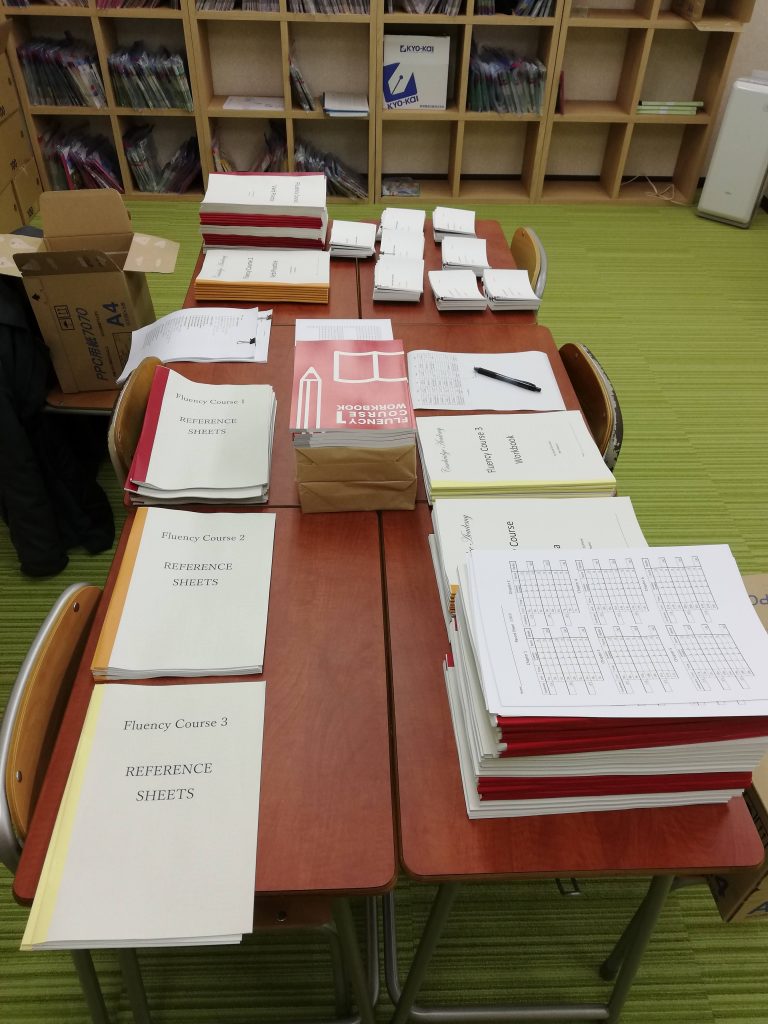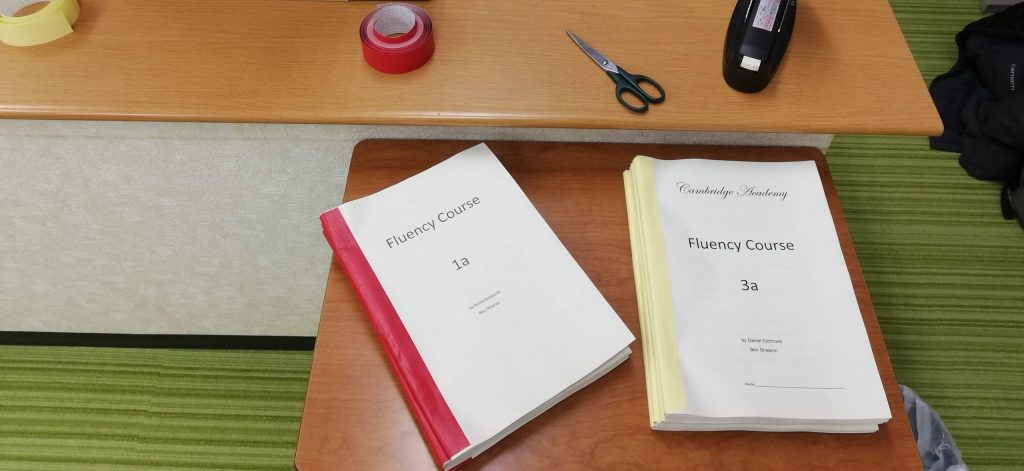Fluency Course Evolution III
Things are getting real

We sent out our first shipment of materials yesterday, to one of our test schools 🙂
A huge milestone. Getting ready to do that resulted in even more changes to the course, so it now looks something like this:
Fluency Course 1
(paid components)
Texts 1a
Texts 1b
Activities 1a
Activities 1b
Workbook 1
Question Cards 1
(free components)
Record sheets (student)
Answer keys (teacher)
Answer keys (student)
Quizlet sets
There are basically 3 main strands to the course, allowing teachers and schools to pick and choose which components they want to use. Of course, using all the components will reinforce things and provide students with effective input and practice, but the option to use only one or two of the strands is also there.
The texts. Each of the text books contains 60 texts with comprehension questions, so they could be used to supplement an existing course.
The activities. These are vocab tests (based on the texts and the Quizlet sets) and dialogues. They mainly supplement the texts.
The workbook and question cards. These provide speaking and writing practice using 240 questions. They could be used to easily provide more speaking practice in an existing class.
At this rate it looks like we’ll be able to provide (discounted) samples by the end of the year and start selling for April 2021. Exciting stuff!
Fluency Course Evolution II
This thing is evolving fast!

Getting ready for the new academic year, hopefully starting in April.
In the process of printing and editing the Fluency Course, we have happily stumbled onto a new iteration. The course is now fully modular.
We pulled everything out of the textbooks except the texts, so now we have a series of components that teachers can pick and choose from. The full course involves using all of them, of course, but it is now possible to use only the texts, for instance, or only the verbs/question cards/etc.
Right now the components look like this:
FLUENCY COURSE LEVEL 1
- Texts 1a -60 texts with comprehension questions divided into 24 units. Text length starts at 45 words at the start of the course and increases to 80 words by the end. Every fourth unit has a single, triple length text instead of the usual three texts per unit.
- Texts 2b -60 texts with comprehension questions divided into 24 units. Text length starts at 80 words at the start of the course and increases to 100 words by the end. Every fourth unit has a single, triple length text instead of the usual three texts per unit.
- Workbook 1 -writing practice of 240 questions and answers that match the conversation question cards.
- Verb practice 1 -48 verbs for oral practice with a written exercise.
- Vocabulary practice 1 -48 vocab quizzes based on the Quizlet and text vocab.
- Conversation question cards 1 -240 questions on index cards with model answers. For students to practice in pairs.
- Reference sheets 1 -vocabulary and questions with Japanese translations for each unit.
- Quizlet data sets -48, one for each unit of the text, including vocabulary and questions.
Levels 2 and 3 are also evolving in similar ways.
I think the most interesting components for most teachers will be the texts. This volume of texts at similar levels is difficult to find in existing commercial textbooks, particularly in ones aimed at Japanese students.
A close second will be the conversation question cards and accompanying workbook, and maybe the verb practice.
We will end up selling some of these, most likely the texts and workbooks, and giving away many of the others as digital downloads for teachers to print. It all seems to be coming together 🙂